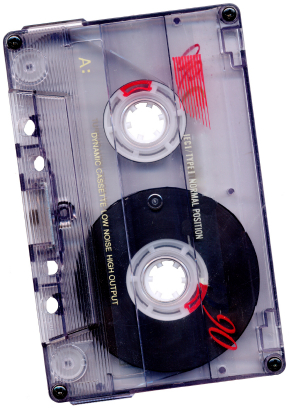Many eDiscovery attorneys associate Chicago with 1) the Blues Brothers and 2) Magistrate Judge Nan Nolan.
 Judge Nolan granted in part and denied in part a motion to compel in an employment dispute.
Judge Nolan granted in part and denied in part a motion to compel in an employment dispute.
The Judge found the Defendant had a duty to preserve audio recordings of calls that had been destroyed under the company’s retention policy.
The Court further held that the destruction of an audio recording to be grossly negligent or supported a finding of fault.
As such, the Defendants were to be sanctioned with a presumption at the summary judgment stage as to whether plaintiff hung up on a customer, and if the case went to trial, the court should instruct the jury with a “spoliation charge” to be determined by the District Court. Banks v. Enova Fin., 2012 U.S. Dist. LEXIS 170000, 1-2 (N.D. Ill. Nov. 30, 2012).
The Defendants quickly found an expressway to the District Court, arguing the Magistrate Judge’s order was clearly erroneous. Id.
I Can’t Turn You Loose
The Defendant argued the Magistrate Judge did not have the authority to impose sanctions under a court’s inherent power without bad faith in the Seventh Circuit. There was no citation to any case law for this position. Banks, at *4-5.
While adverse inference instructions do require a showing of bad faith, the Court did not find any bad faith related to the destruction of the tapes. Banks, at *5. However, the District Court noted that the Magistrate Judge did not issue an adverse inference instruction and it was within the Court’s discretion to craft sanctions proportional to a case. Banks, at *6.
The Defendant also challenged the Magistrate Judge’s finding the Defendant had a duty to preserve. The Court found the Defendants had a duty to preserve the audio recordings based on 1) the termination of the employee based on the phone calls; 2) the Plaintiff’s meeting with his supervisor over his termination; 3) the unemployment claim litigation; and 4) the EEOC charge. Banks, at *6-7.
The Seventh Circuit’s case law states that the duty to preserve arises when a party “’knew, or should have known, that litigation was imminent.” Banks, at *7, citing Viramontes v. United States Bancorp, 2011 U.S. Dist. LEXIS 7850 (N.D. Ill. Jan. 27, 2011).
The District Court noted the issues with terminating an employee alone being a triggering event for a lawsuit:
It would be too onerous a burden to place on all employers a duty to preserve any and all documents that form the basis for the termination of an employee because of the possibility that the terminated employee might sue.
Banks, at *7.
The District Court upheld the Magistrate Judge’s findings that the Defendant had a duty to preserve, because the Defendant could reasonably anticipate litigation when the Plaintiff brought his unemployment claim. Banks, at *7.
The central issue in the dispute was whether the Plaintiff hung up on a customer. The key evidence for his termination were the audio recordings, which still existed when the Defendant appealed the Plaintiff’s initial award of unemployment benefits, however were later destroyed. Banks, at *7-8.
Bow Tie Thoughts
The duty to preserve is a malpractice area for attorneys when transitioning from records information management to a litigation hold. Moreover, eDiscovery is now years beyond email messages and Excel files. Attorneys must discuss with their clients the different electronically stored information in their possession, how they communicate both internally and externally, and what ESI can be related to the subject matter of the lawsuit.
Voicemail/audio recordings is just one example of ESI that can be overlooked. Text messages and social media are already “common” in litigation. It is only a matter of time before augmented reality will start appearing in litigation.
Attorneys must be proactive in conducting client interviews and understanding the types of ESI that can be subject to a lawsuit. To not do so is to risk singing the blues at a sanctions hearing.

